-
Posts
1,020 -
Joined
-
Last visited
-
Days Won
1
Content Type
Profiles
Forums
Blogs
Gallery
Events
Store
Posts posted by Taz
-
-
Image of the award.
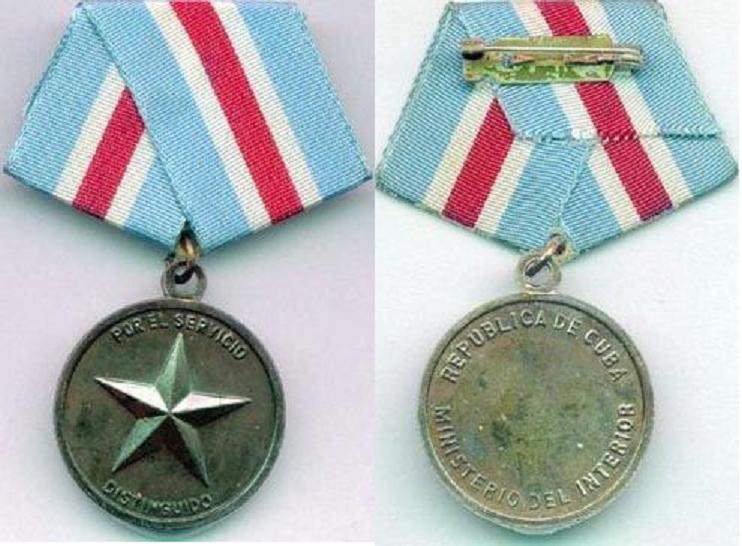
 0
0 -
Awarded to members of the Ministry Internal Affairs for distinguished service. Instituted after 1980 so not in the decreto ley #30.

 0
0 -
Hello Drew and welcome,
I think it would be safe to say that a Cuban Political Officer would probably be trained at the Ministry of Interior (MININT) Instituto Superior del MININT "Hermanos Mart?nez Tamayo"
(Hermanos Mart?nez Tamayo Higher Institute: Ministry of the Interior) which was founded in 1978-1979.
Not 100% certain of course.
He would then during his service, qualify for the Ministry of the Interior specific awards.
Medalla "Por la Seguridad del Orden Interior" (I) & (II) the three classes of the Distinci?n "Por el Servicio en el Ministerio del Interior" and the Distinci?n "Por el Servicio Distinguido en el Ministerio del Interior
come to mind.
I would think an acadamy badge too.
As Rick states all very new ground we are researching here, his boards in the Lieutenant General's insignia thread, a rank insignia chart and various qualification badges are all we have right now.
Regards Eddie
0 -
Reading though an article on the Cuban labour force I found this little piece of information on labour type awards.
Around the 1970's there were 26 different Orders and Medals (Work Heros, National Vanguards, Provincial Vanguards, outstanding worker etc) instituted and awarded to the Cuban work force to boost moral and work incentive.
As you can see two types of Vanguard are mentioned, just the City or town level awards (Municipal Vanguard) are not included. So we can confirm at the moment, three types:
1. National Vanguard
2. Provincial Vanguard
3. Municipal Vanguard
Also interesting to note that the Distinction type of labour awards are all ranked the same and are not listed in the Decreto Ley #30 in an order of precedence.
This is stated in CHAPTER VII, ARTICLE 14. All Distinctions have the same hierarchy level.
This is important to know and means that just because it is low down on the availiable ribbon list it does not mean it is a lesser award than the ones further up.
Regards Eddie
0 -
Because this Distinci?n was created after the Decreto Ley #30 the award critaria is not in that document.
However it seems that it is printed on the inside of the award document itself.
Here is a rough translation.
Awarded in recognition of merit and work for the enrichment of education and the promotion of work in the educational field and has kept an exemplary and matching attitude to revolutionary principles.
Regards Eddie
0 -
This is a CDR - MINSAP (Comit?s de Defensa de la Revoluci?n - Ministerio de Salud P?blica de la Rep?blica de Cuba) awarded Blood donor Badge for 50 voluntary Blood donations.
Regards Eddie.
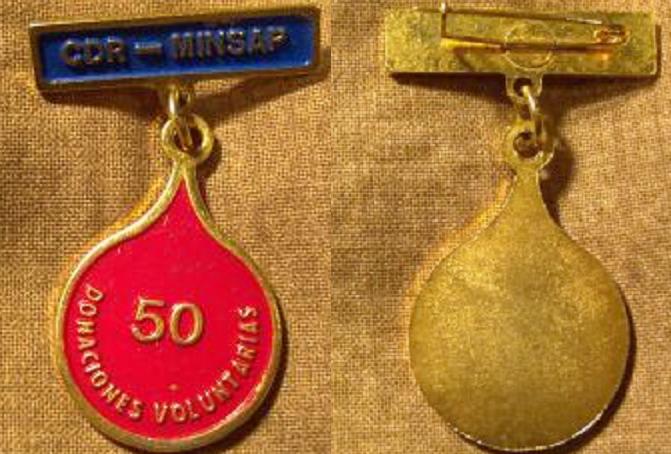
 0
0 -
These are very interesting

With regards to Vanguard awards it seems there are different stages or classes.
1. On a National scale the Colectivo Vanguardia nacional award includes the presenting of a flag.
Each Trade Union awards this to an organisation every year.
2. Then we have your Municipal Vanguard badge. Which seems to be awarded by the City or region Unions
3. The Vanguardia del periodo badge shown in the Orden "L?zaro Pe?a" thread post #13
And a further, what I assume is another sort of Vanguard Badge shown in the second photo. As you can see the left top row have the same chevron design.
Regards Eddie.
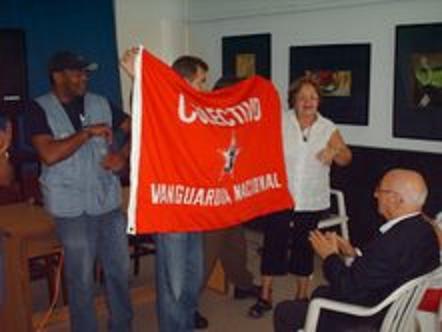
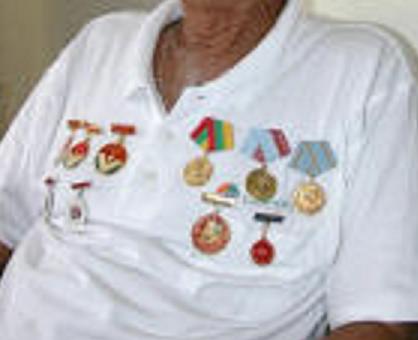

 0
0 -
Hello Darrell,
Here is a little info for you.
http://www.lexikon-der-wehrmacht.de/Gliede...ter/IR950-R.htm
http://en.wikipedia.org/wiki/Indische_Legi...n_der_Waffen_SS
Regards Eddie.
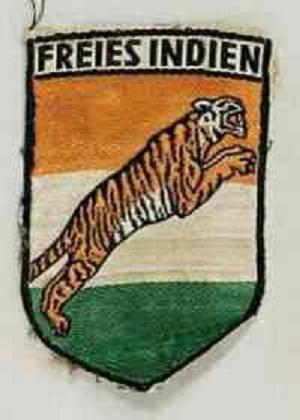
 0
0 -
I recieved my Distinci?n "28 de Septiembre" today.
Mint condition not a scratch on it. No obvious differences to the other awards shown here.
It would seem likely that they are now made in Cuba, either that or the stockpile is huge.
Regards Eddie.
0 -
Has anyone ever seen a breakdown on the nationalities of foreign volunteers who served on BOTH sides?
This Information on the Republican International Brigades was linked in a previous post. With kind permission from Marcus Wendel (AHF) I am able to post it here. Thanks again Marcus.
Interantional Brigades with the Republican forces
11. International Brigade Hans Beimler (later Th?lmann), Formed on 22 Oct 1936
12. International Brigade Garibaldi, Formed on 5 Nov 1936
13. International Brigade Dombrowski, Formed on 12 Dec 1936
14. International Brigade La Marseillaise, Formed on 2 Dec 1936
15. International Brigade, Formed on 31 Jan 1937
86. International Brigade, Formed on 13 Feb 1938
129. International Brigade, Formed on 13 Feb 1938
150. International Brigade, Formed on 27 May 1937
Battalions
Battalion Abraham Lincoln (Main nationality, US - Brigade 15)
Battalion Adam Mickiewicz (Main Nationality, Polish - Brigade 13)
Battalion Andr? Marty (Main nationality, French & Belgian- Brigades 12 & 150)
Battalion Austrias Heredia (Main nationality, Spanish - Brigade 11)
British Battalion (Main nationality, British - Brigade 15)
Battalion Commune de Paris (Main nationalities, French & Belgian - Brigades 11 & 14)
Battalion Deba Blagoiev (1)
Battalion Dimitrov (Main nationality, Balkan - Brigades 13, 15 & 129)
Battalion Djure Djakovic (Main nationality, Balkan - Brigade 129)
Battalion Doce Lenguas (2)
Battalion Dombrowski (Main nationalities, Polish & Hungarian - Brigades 11 & 12)
Battalion Domingo Germinal (3) (Main nationality, Spanish - Brigade 14)
Battalion Edgar Andr? (Main nationality, German - Brigade 11)
Battalion Espa?ol (Main nationality, Spanish - Brigade 15)
Battalion Figlio (4) (Main nationality, Italian - Brigade 12)
Battalion Galindo (Main nationality, Spanish - Brigade 15)
Battalion Garibaldi (Main nationality, Italian - Brigade 12)
Battalion George Washington (Main nationality, US - Brigade 15)
Battalion Hans Beimler (5) (Main nationality, German - Brigade 11)
Battalion Henri Barbusse (Main nationality, French - Brigade 14)
Battalion Henri Vuillemin (Main nationality, French - Brigade 13)
Battalion Juan Marco (Main nationality, Spanish - Brigade 13)
Battalion Louise Michel (Main nationalities, French & Belgian - Brigades 13 & 14)
Battalion Louise Michel II (6) (Main nationality, French - Brigade 14)
Battalion Mackenzie-Papineau (7) (Main nationalities, Canadian & US - Brigade 15)
Battalion Madrid (Main nationality, Spanish - Brigades 11 & 12)
Battalion Marsellaise (Main nationality, French - Brigade 14)
Battalion Mathis Rakosi (Main nationality Hungarian 13, 150
Battalion Otumba (Main nationality, Spanish - Brigade 13)
Battalion Pacifico (Main nationality, Spanish - Brigade 11)
Battalion Palafox (Main nationality, Polish - Brigade 13)
Battalion Pasionaria (Main nationality, Spanish - Brigade 11)
Battalion Pierre Brachet (Main nationality, French - Brigade 14 )
Battalion Prieto (Main nationality, Spanish - Brigade 12)
Battalion Primera Unidad de Avance (Main nationality, Spanish - Brigade 14)
Battalion Sans nons o Des Neuf Nationalit?s (Main nationalities, Mixed - Brigade 14)
Battalion Six F?vrier (Main nationality, French & Belgian - Brigades14 & 15)
Battalion Th?lman (Main nationality German - Brigades 11 & 12)
Battalion Thomas Mazaryk (Main nationality, Czech - Brigade 129)
Battalion Tschapaiew (Main nationality, Balkan - Brigades 13 & 129)
Battalion Vaillant-Couturier (Main nationality, French - Brigade 14)
Battalion Veinte (Main nationalities, Mixed - Brigades 13 & 86)
Battalion Zw?lfte Februar (Main nationality, Austrian - Brigade 11)
1. Merged with Djure Djakovic
2. Merged with Dimitrov
3. Domingo Germinal merged with Vaillant-Couturier
4. Merged with Garibaldi
5. Merged with Th?lmann
6. Merged with Henri Vuillemin
7. Aka Canadian Battalion and MacPaps
The British Battalion also comprised of Irishmen, Australians, New Zealanders & South Africans.
Nationalist Foreign volunteers
Germany - Legion Kondor.
Portugal - Moroccan Regulares.
Spanish Foreign Legion - Mostly Spaniards.
France - Contingent from the French fascist Croix de Feu.
White Russia - White Russian volunteers.
Romania - Romanian Iron Guard.
Ireland - Irish Brigade, also known as la bandera Irlandesa.
Alongside them fought a single Australian, Germans, Americans, a few British, several Poles and assorted individuals from the Baltic states.
This list is by no means complete, but I hope it serves as a general referance on the many Nationalites that took part in the Spanish Civil war. As you can see many nations had men fighting on both sides.
Regards Eddie.
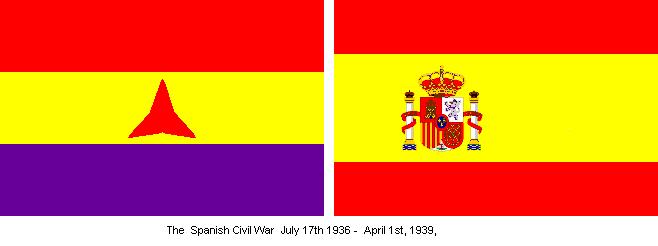
 0
0 -
Nicely presented Megan,
here is some background information on this Order, established specifically for the military.
Antonio Maceo
Antonio Maceo 1845-1896, Was one of the principal figures of the Cuban struggle for independence, which consisted not only of action on the fields of battle but also of the political maneuvers of Cuba, Spain, and the United States. Maceo, hailed as the "Titan of Bronze" after his death in battle, played a vital part in both the Ten Years' War of 1868- 1878, and the successful war that began in 1895, ending in 1898 after the United States had entered the struggle.
Decreto Ley #30
Awarded to members of the Revolutionary Armed Forces in active duty, reservists and retirees, and to military units of the Revolutionary Armed Forces, for extraordinary successes in military operations; for troops? high level combat qualities; for firm and decisive combat actions, or for the training and readiness which contribute to the defense, development and consolidation of our socialist homeland.
It will be also given to military and military units of friend countries for the same reasons.
Regards Eddie.
0 -
Rick
That would be awesome if it is: Where do you go to find names of WWII Vets? I would like to find out some information on some engraved medals I have.
Thank You
SSG Luna, Lorenzo
Hi Lorenzo,
A fellow Tankie none the less

This is what I followed up to get the info, Hoping of course that it is the right man.
http://www.idreamof.com/military/ww2/f_surnames.htm
Then I checked the PDF file of the Military Intelligence Service Language School Registry 1941-46 which is where his army sevice number was listed.
Regards Eddie.
0 -
Such a pity these photos are not named, i'm pretty sure Roy Fujii would be amonst them somewhere.
Check the link it has some interesting photos.
The MISLS was located at Fort Snelling from the spring of 1944 till June 1946. It was then moved from Fort Snelling to the Presidio of Monterey, California, and was renamed the U.S. Army Language School.
http://misvets.org/gallery.htm
Regards Eddie.
0 -
Hi folks,
One of the items in my collection is a WWII period US officer's visor cap which is named on the inside to a "Lt Roy S Fujii, Ft Snelling". Is there any way of finding out more about who he was ? The name suggests he was a Nisei and I would love to be able to put some detail behind the man.
Cheers in advance,
Paul
Hi Paul,
Maybe this is your guy?
Fujii, Roy Satoshi; Military Intelligence Service; XIV Corps-165th Language Detachment- Bougainville
Army service number: 38085465
Regards Eddie.
0 -
Close up images of the Medal.
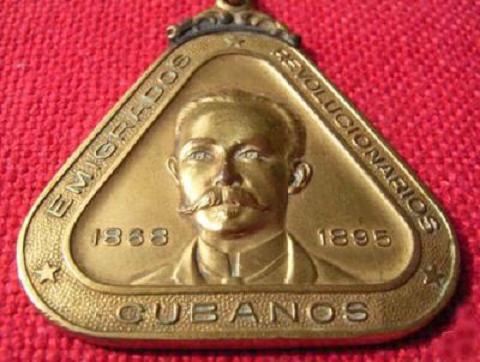
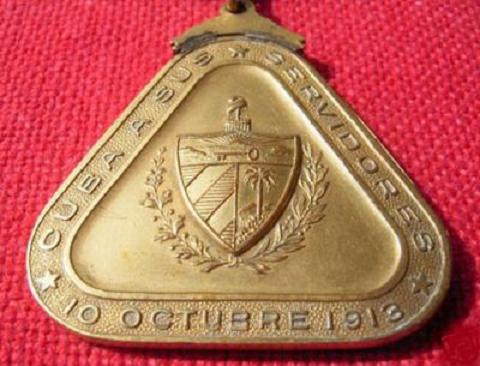

 0
0 -
Although a Pre-Castro award this decoration was ratified under Chapter II, Article 2 of the Decreto Ley #30
The awarding requirements, criteria and their characteristics for these medals, are the ones established by the legal texts which created them, but will be adjusted according to what is established in Law N? 17, of June 28, 1978, of the System of Awards and Honorific Titles and their rules.
Created by Decree N? 918, of October 10, 1913 and modified by Decree N? 1509, of September 20, 1929.
Rough translation at the moment sorry about that.
Medal Design and regulations
1. To create the symbol, that will denominate "Medal of the Emigration", for use of the Cuban revolutionary e'migre's and the foreigners whom with them they cooperated to the cause of the Cuban Revolution.
2. Distinguishing saying will consist of a gold plate of triangular-equilateral-curvilinear form, three and average centimeters of height, slope of a tape of silk with the national flags.
3. It will show in the obverse the bust of Jose Mart?, with the inscription "Emigrated Revolutionary Cuban" and on the inferior angles dates 1868-1895, and on reverso the shield of Cuba and the motto "Cuba to his servants", and on the inferior side or bases, the date of the promulgation of this decree.
4. By the Secretariat of Interior it will be come to the preparation of a diploma that credits the right to the use of the medal, which will contain all the particularitities of the case.
5. In order to acquire the diploma it will be necessary to verify, with certification sent by the Association of Cuban Revolutionary E'migre's, served in the emigrations, when one is people who are in national territory, and with documents sent by the consuls of the Republic, previous investigation that practices, advised patriotic recognized of the locality, when one is requests that reside abroad.
6. The obtaining and use of the Medal of the Emigration do not imply privileges nor prerogatives.
7. The diploma will be sent free, having to be signed by the President of the Republic and authenticated by the Secretary of Interior. The acquisition of the medal will be of account of the attractive one.
Dice in the fifth "Dura?ona", calls to account presidential, in Marianao, to the 10 days of the month of October of 1913.
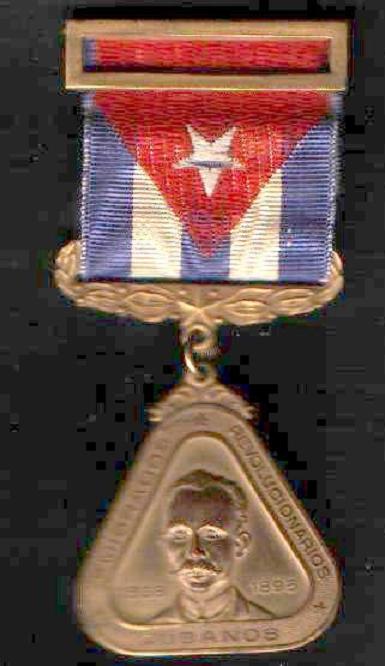
 0
0 -
Here are the additional reward requirements. Please excuse the rather rough translation at the moment
Orden "L?zaro Pe?a" de Primer Grado
A) Workers who have deserved the recognition of National Vanguard of the Union in their respective political, labor and social activities, and who obtain accumulated extraordinary results from the last granted decoration.
1) on fulfillment of norms or the tasks with the required quality,
2) the increase of the productivity of the work,
3) the saving in its job or center of work
4) the labor discipline
5) the elevation of its cultural and technical level or the one of its companions,
6) the voluntary work in benefit of the society and
7) the contribution of inventive, innovations and rationalizations.
B) To workers who have remained in active service during a prolonged period of accumulated years and great merits in their labor life
C) To companies, establishments and budgeted units that have reached the condition of National Vanguards by several years and accumulate extraordinary results in the fulfillment of the plans of production or services and other indices of the emulation and obtain the Plate of Heroic Tradition by three occasions.
Orden "L?zaro Pe?a" de Segundo Grado
A) Workers who have deserved the recognition of National Vanguard of the Union in their respective political, labor and social activities, and that obtain accumulated extraordinary results from the last granted decoration (the requirements are such that they settle down in the interjection To of the one of first degree)
B) To companies, establishment and budgeted units that have reached the condition of National Vanguards by several years and accumulate extraordinary results in the fulfillment of the plans of production or services and other indices of the emulation and obtain the Plate of Heroic Tradition by two occasions.
Orden" L?zaro Pe?a " de Tercer Grado
A) Workers who have deserved the recognition of National Vanguard of the Union in their respective political, labor and social activities, and that obtain accumulated extraordinary results from the last granted decoration (the requirements are such that they settle down in the interjection To of the one of first degree)
B) to the workers, farmers and the military who habitually or with voluntary character remain, they participate actively and they obtain outstanding results and they are fulfilled successfully the requirements that settle down in each sugar drip jar, or like members of the Movement of Millionaire Brigades or like macheteros or macheteras integrated in brigades or work groups,
C) to operators of combined and gatherers, choferes of trucks, tractoristas and wagon that are dedicated to the cane shot,
D) to workers of the sugar industry and workers of any means of transport destined to the sugar shot, as well as to the workers of the tie ports to the drip jar activity,
E) To companies, establishments and budgeted units that have reached the condition of National Vanguards by several years and accumulate extraordinary results in the fulfillment of the plans of production or services and other indices of the emulation and obtain the Plate of Heroic Tradition by two occasions.
Regards Eddie
0 -
This Commemerative Medal for "comrade" Augustino Neto was made in Cuba (1970-80)
Pity there is no suspension on this example.
Regards Eddie
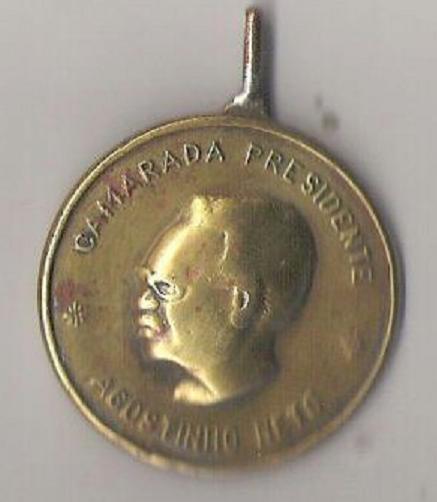
 0
0 -
Following up on the question. what was a Vanguard here is one of the badges.
They are worn on the left (as you look) side of the breast.
Vanguardia Del Periodo Badge

 0
0 -
Sorry no breakdown of kills but his interesting story.
http://www.3ad.org/wwii_heroes/pool_lafaye...l_ordnance1.htm
Regards Eddie.
0 -
Bob,
If you can put this into this catagory, Chechen separatists issue their own awards ("Chechen Republic of Ichkeria")
The Order of Schamil is awarded in two classes for example.
Regards Eddie
0 -
reverse
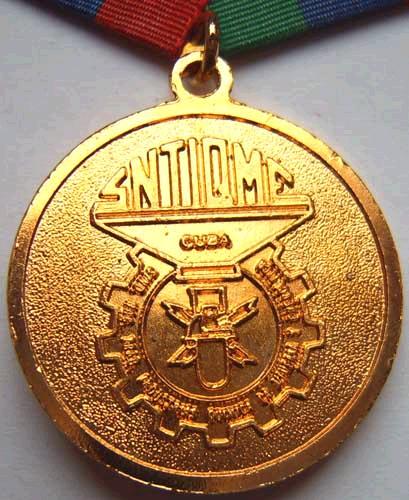
 0
0 -
Boxed example and close ups.
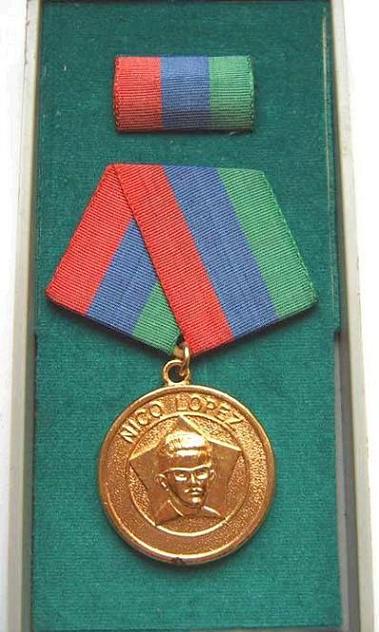
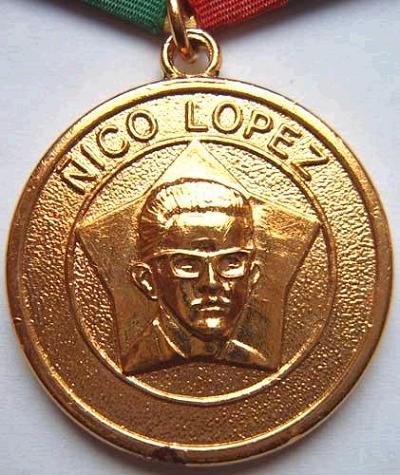

 0
0 -
The Man behind the award
Rafael Maria de Mendive was a Cuban author, born in Havana in 1821; died in 1886. He was educated in his native city, and began to cultivate literature from early youth. In 1845 he published a literary newspaper named "Flores del Siglo," and in 1847 a collection of his poems with the title of " Pasionarias." They were of a romantic character, and obtained wide recognition. From 1848 till 1852 he travelled in Europe, and, after returning to Cuba, founded the "Revista de la Habana," one of the best reviews in Spanish America. In 1869 he was banished from Cuba on account of his liberal opinions. He resided alternately in New York and Nassau, New Providence, where he wrote several legends and tales in verse, but in 1878 he returned to Cuba. Mendive is considered one of the best of Spanish-American poets, and many of his poems have been translated into English, French, and Italian. He has published, associated with three other writers, a book of poems called "Cuatro Laudes" (1856). A new edition of his poems was published by the Spanish critic Don Manuel Cafiete (Madrid, 1860), and other editions have appeared (Havana, 1861 and 1884). He translated Moore's "Irish Melodies" in verse (1863).
0




Cuban Military POLITICAL cadre
in Republic of Cuba
Posted
Drew,
That is of course the case in Cuba, every walk of life is controled by Communist Party organizations. Much like the GDR set up, and from a very early age. All schools and Acadamys practice the teaching of Political doctrine. Cuba is, for all intents and purposes the Military.
As recently as 2003 there was a major crackdown on political dissidents. The Cuban government arrested about 80 journalists, activists, and opposition party leaders for supposedly plotting to undermine the government and threaten national security. During closed trials, the dissidents were sentenced to prison terms of varying lengths up to 28 years.
The FAR and the PCC are linked through FAR membership in Communist Party organizations.
Military officials hold office in the Central Committee and the Politburo, and they sit in the Council of Ministers.
The Ministerio del Interior is Cuba's state agency responsible for internal security. Within MININT are a number of paramilitary, military, and intelligence branches:
The Border Guard Troops; the National Revolutionary Police; the Special Troops, which are under Fidel Castro's direct command; the Department of State Security Force, which conducts domestic intelligence; and the Department of General Intelligence, which operates international espionage.
The MININT is responsible for top security and intelligence operations, and its members are assumed to be absolutely loyal to the revolutionary government. Only high-ranking officers are assigned to handle the secretive work characteristic of the MININT.
However, lets get back to the topic, this forum is for the Military collector not Political rights or wrongs.
A Cuban Political Officer following a Military Political career would almost certainly be trained at an Acadamy. And this would most likely be at the MININT Higher Institute. Cuban uniforms in general seem very basic, even the highest ranking officers wear the plain Olive green shirt and trousers, with the usual "Cuban" cap, for everyday use and parade inspection. Probably only the branch insignia, the acadamy badge and a Ministry of the Interior related ribbon bar would seperate him/ her from regular Cuban Army Officer.
As more uniform information comes to light it will be interesting to see just how right or wrong we are but for now only assumtion is possible from the knowledge of other socialist aligned states.
Regards Eddie.